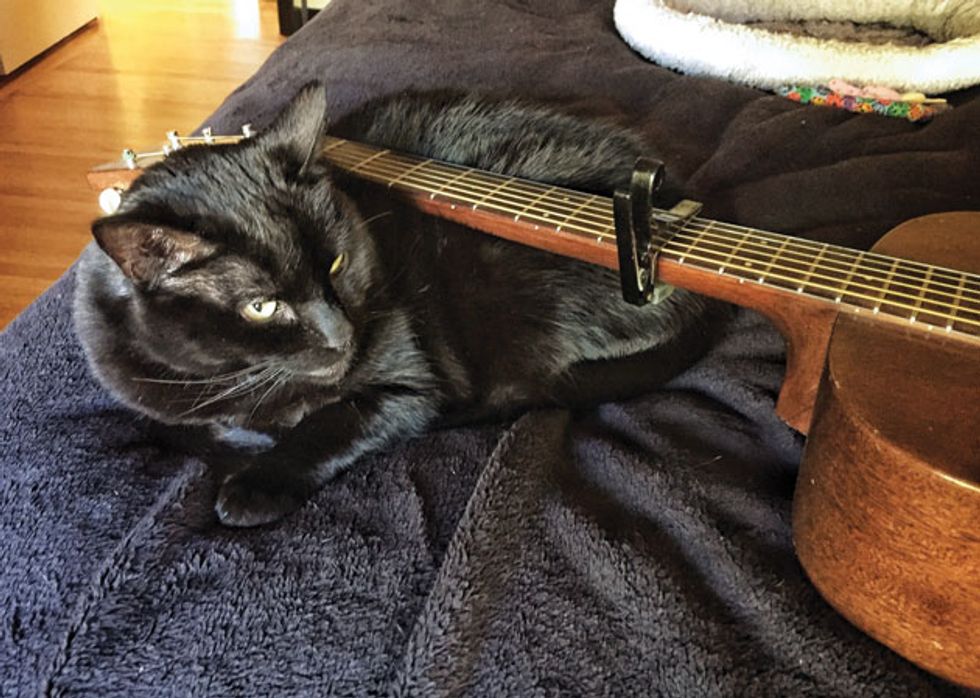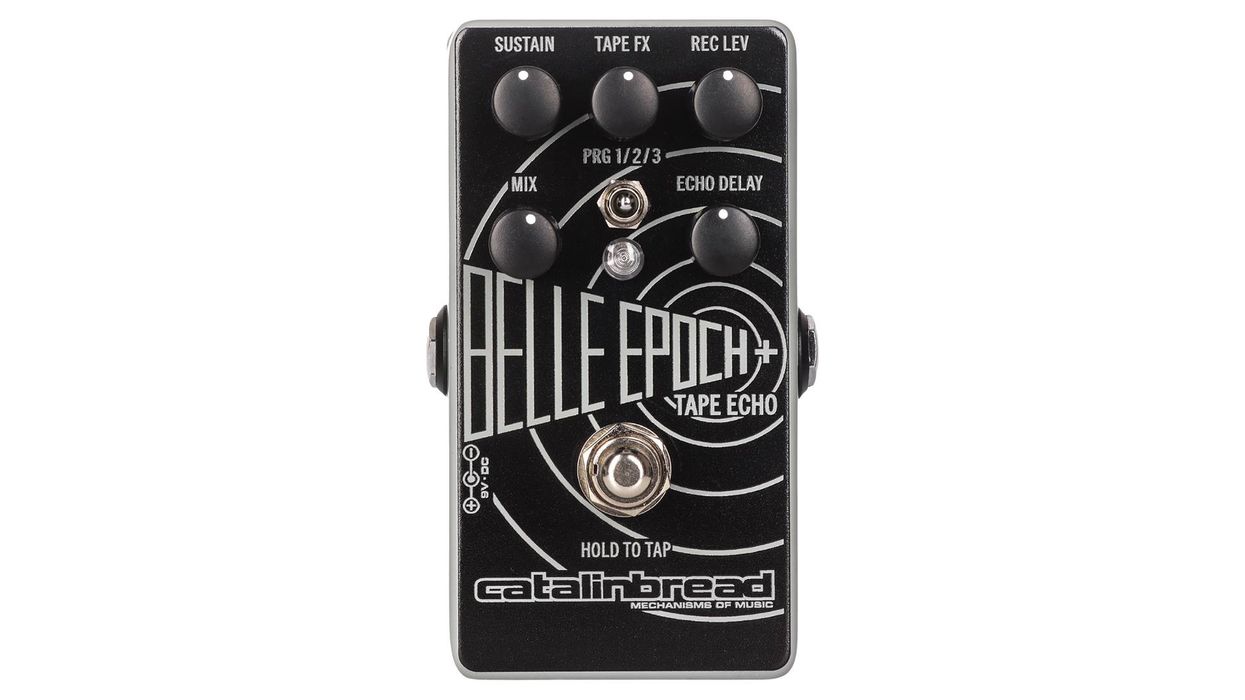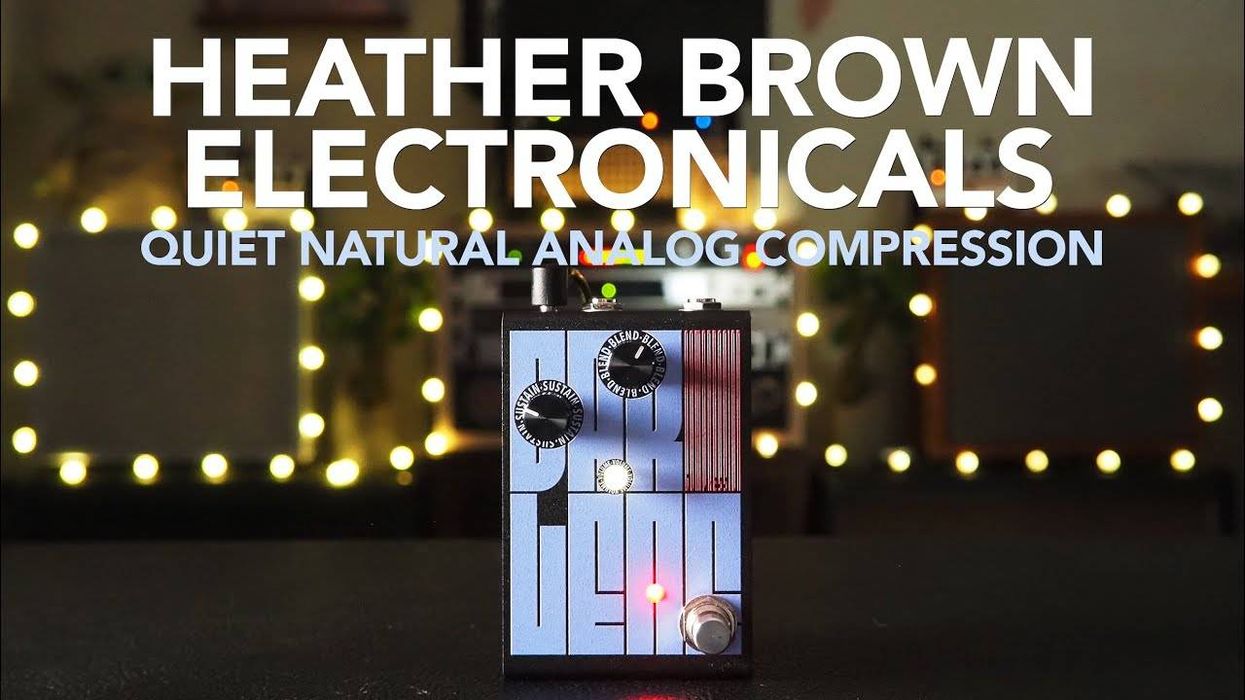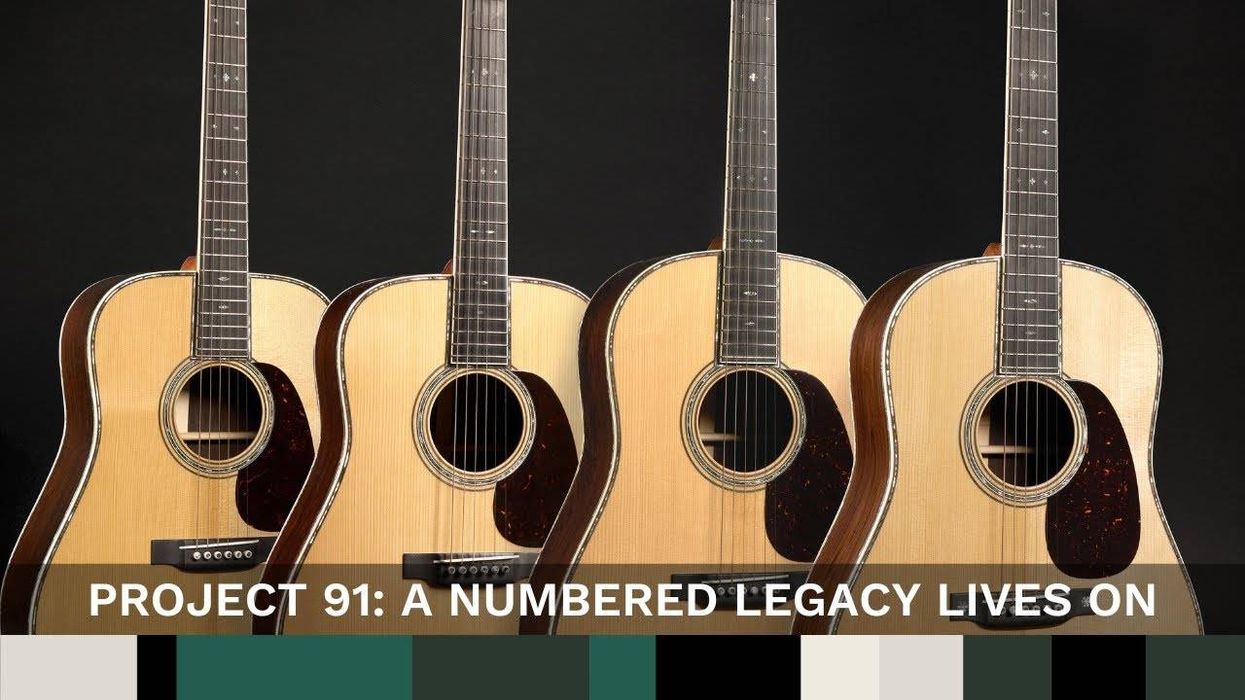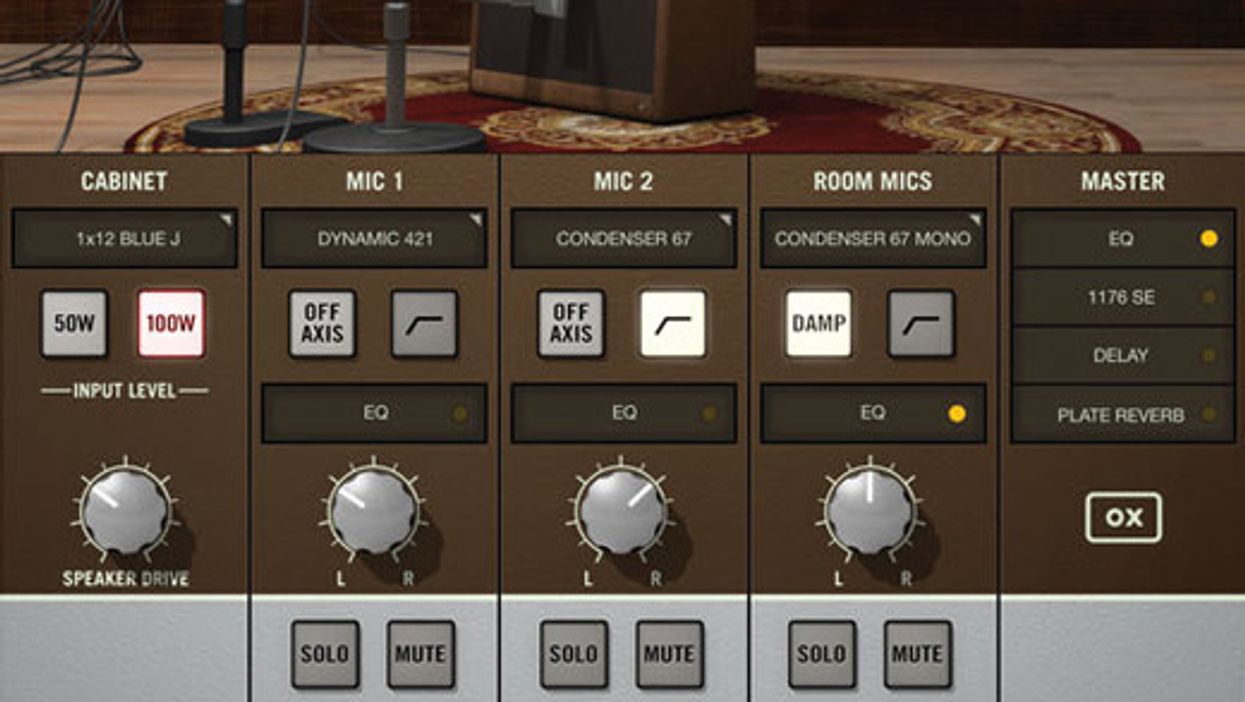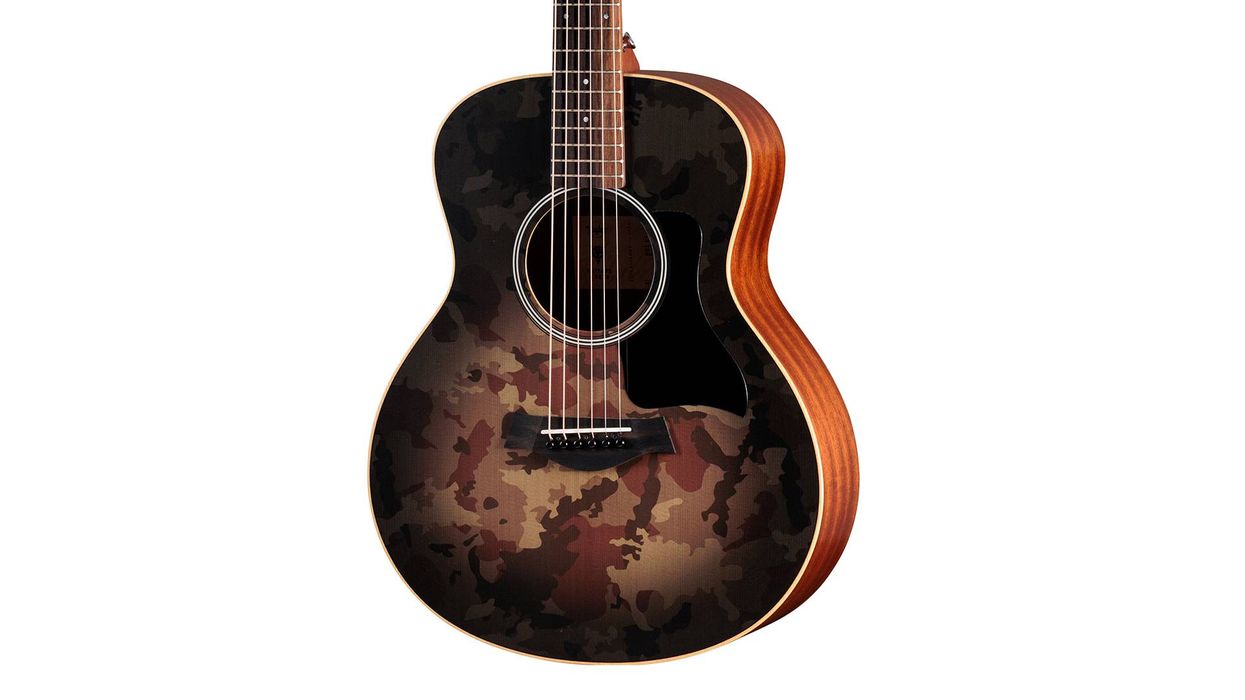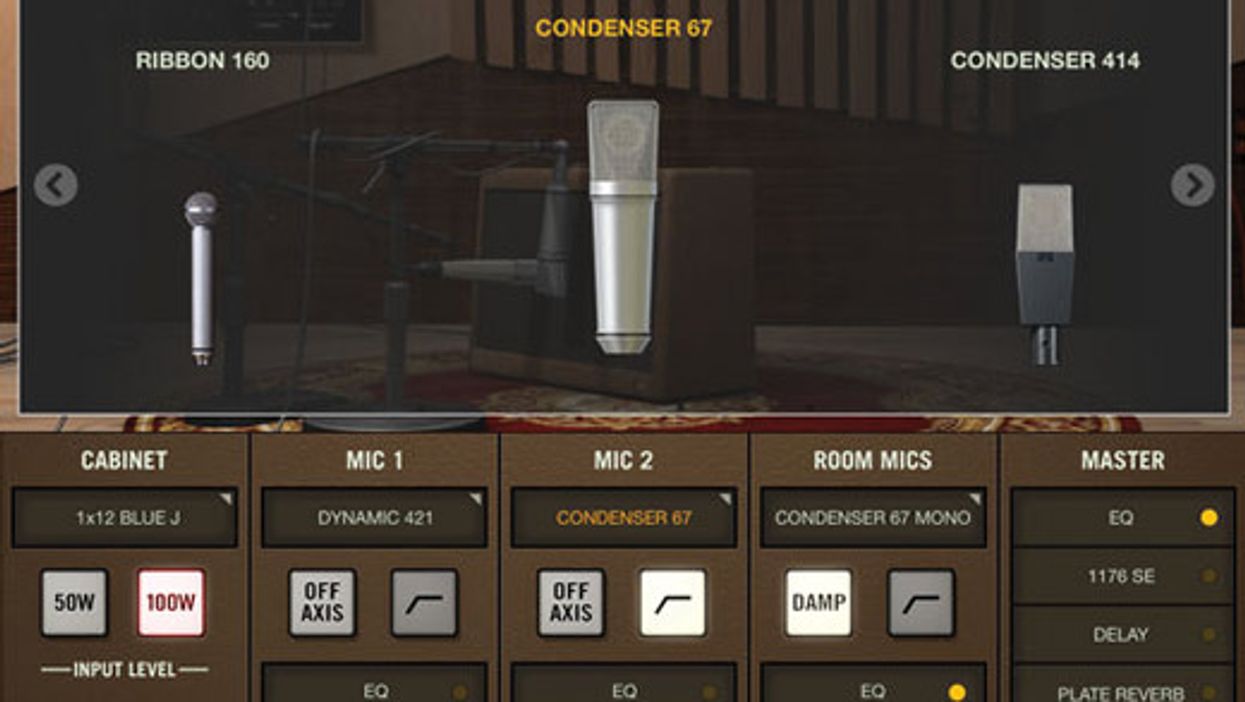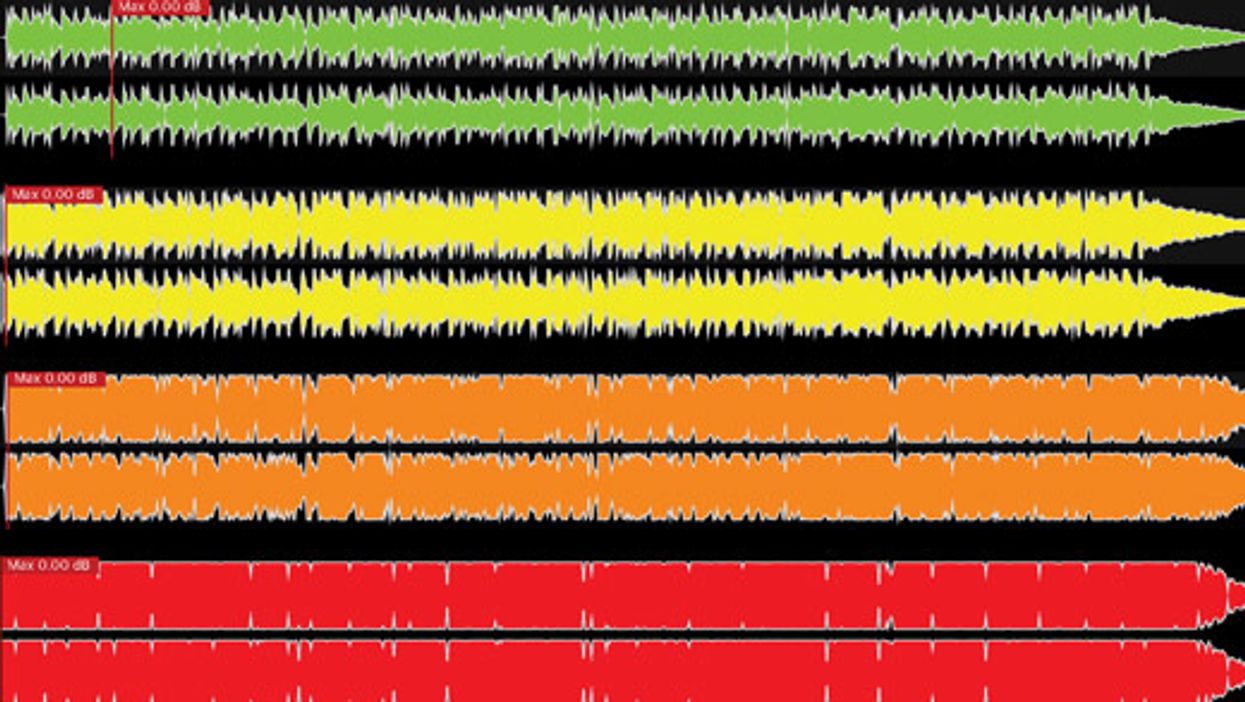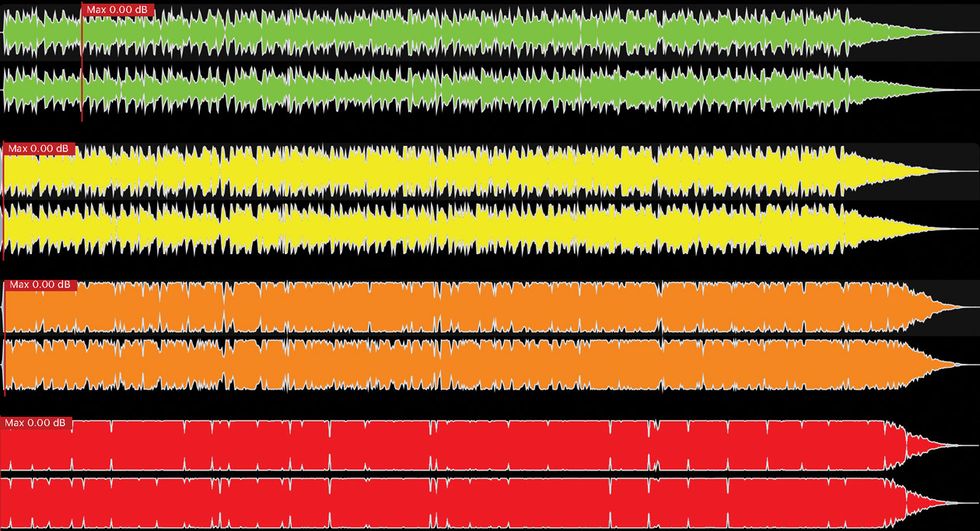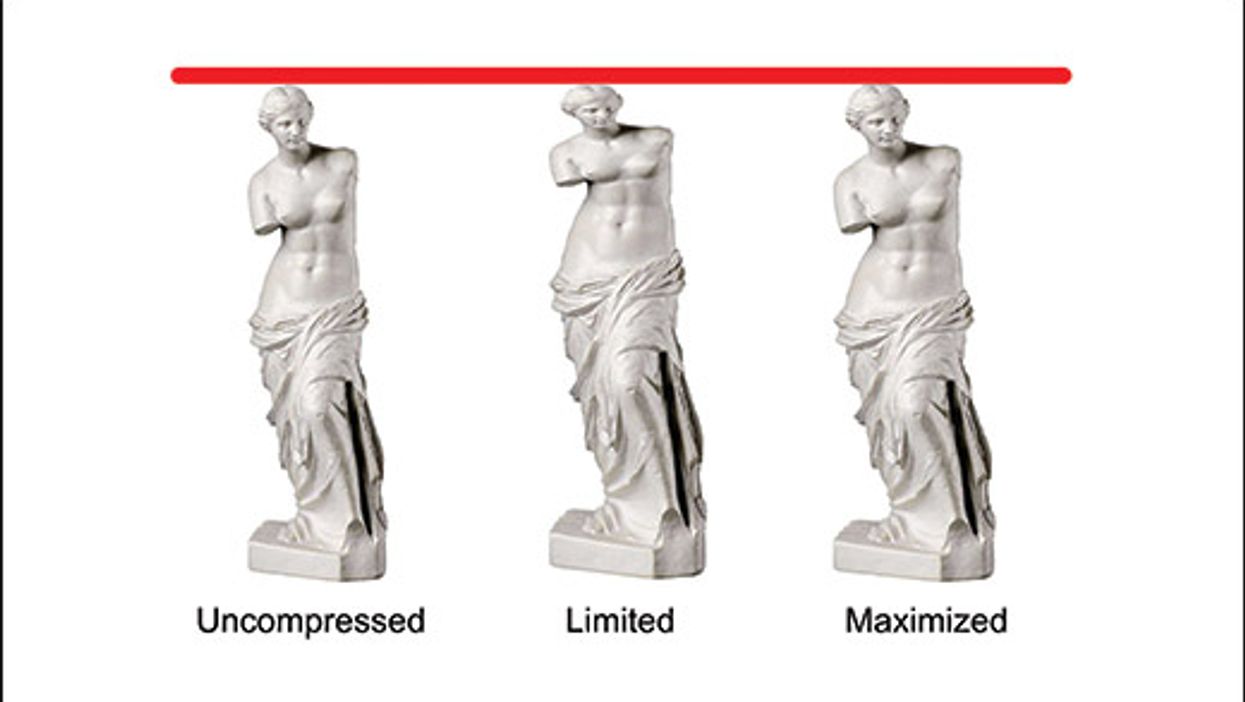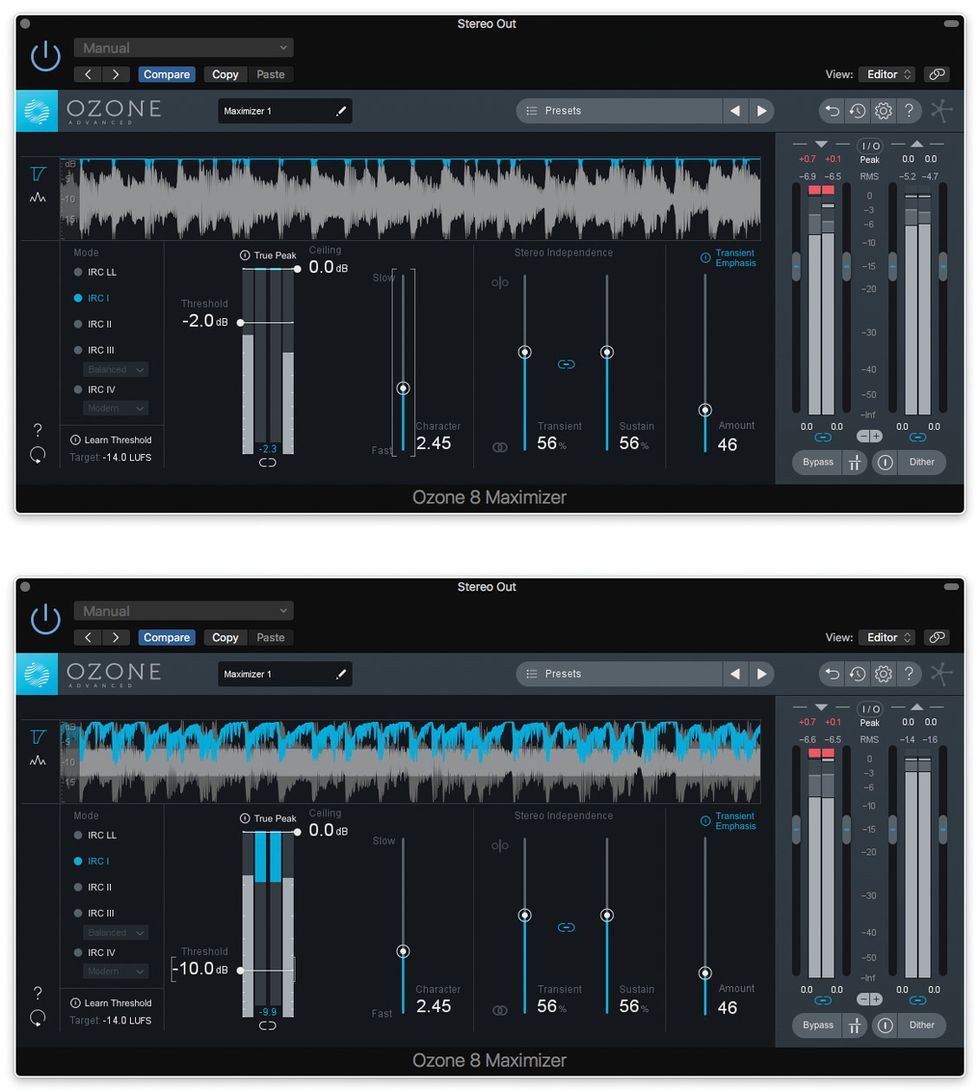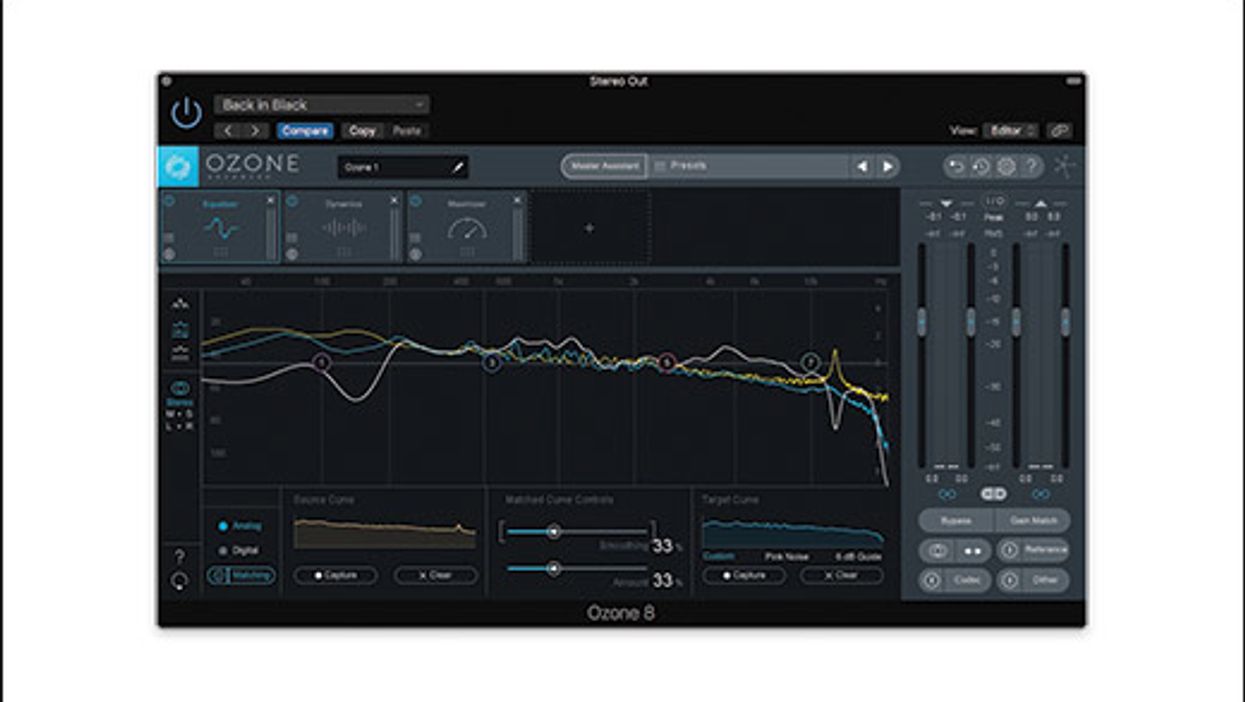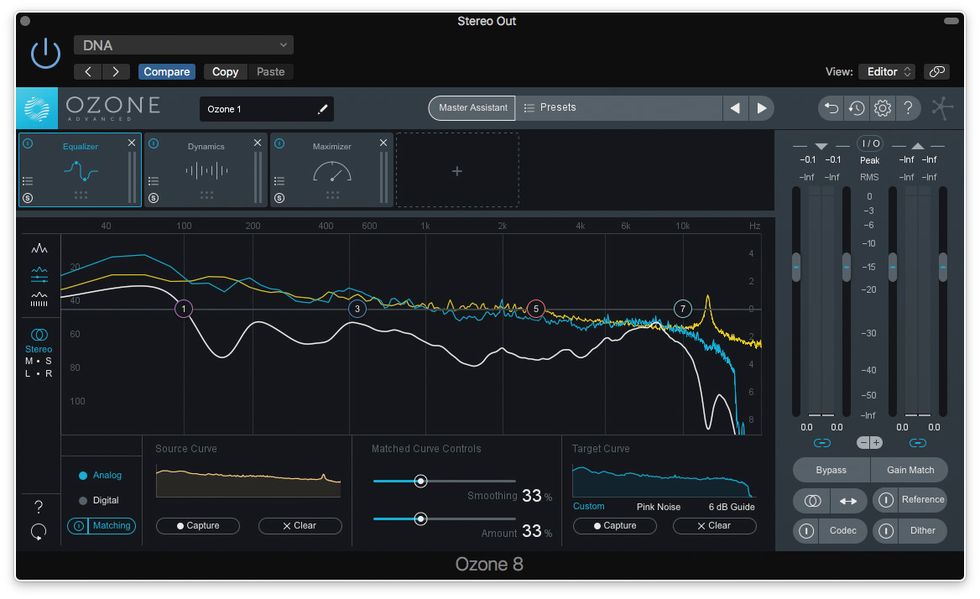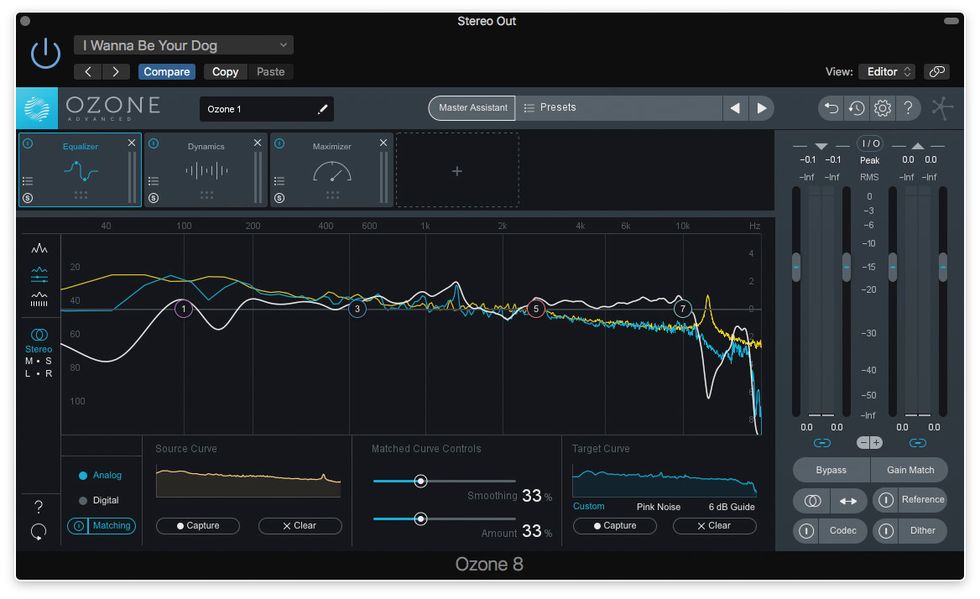Last time around we looked at creating sparkling “fairy dust” overdubs with the help of such instruments as standard and octave 12-string guitar, “Nashville high-strung” guitar, mandolin, and ukulele. This month we’ll consider another method: just slapping on a capo and accompanying the primary part with chords fingered in other keys.
This technique is easier and more economical than maintaining a menagerie of alternate instruments, and sometimes it just sounds better. When you double a guitar part with a similar instrument—or even the same one—the two tracks are easier to blend thanks to their matching timbres.
Here the parts are near-doubles, but these transposition techniques apply to almost any accompanying part. They might even help you improve a primary part.
CAGED fury. Using the same foundation guitar part as in my previous column, let’s evaluate the results as we ascend the neck, mirroring the original part in ever-higher positions. Transposing on the fly like this requires a solid grasp of fretboard theory. Fortunately, we’ve got a great conceptual tool: the CAGED system, a method of viewing the fretboard as five successive positions.
When I was a teen in the Pleistocene, I learned the five-position concept from my sometime teacher, the great Ted Greene. I didn’t hear the term “CAGED” till decades later, but I wish I’d known it back then because it’s such a great mnemonic device. From the CAGED perspective, each position corresponds to a simple open-position chord: C, A, G, E, and D, in that order. (For more on the CAGED concept, check out this PG article.)
Players usually tackle the CAGED concept to improve their fluency in single-note soloing, but here we’ll apply it to fingerpicked open-position chords. All these examples can be played without a capo, assuming you have the hand strength to maintain an index-finger barre while fretting partial chords with your other fingers. Still, a capo might be best for these particular parts, which emphasize chiming open strings.
Oh, say can you C? Conveniently, our primary part is based on an open-position C chord. I started out with a simple unison double. Even though there are no added high notes, the phase shifting between the upper frequencies creates fairy-dust animation.
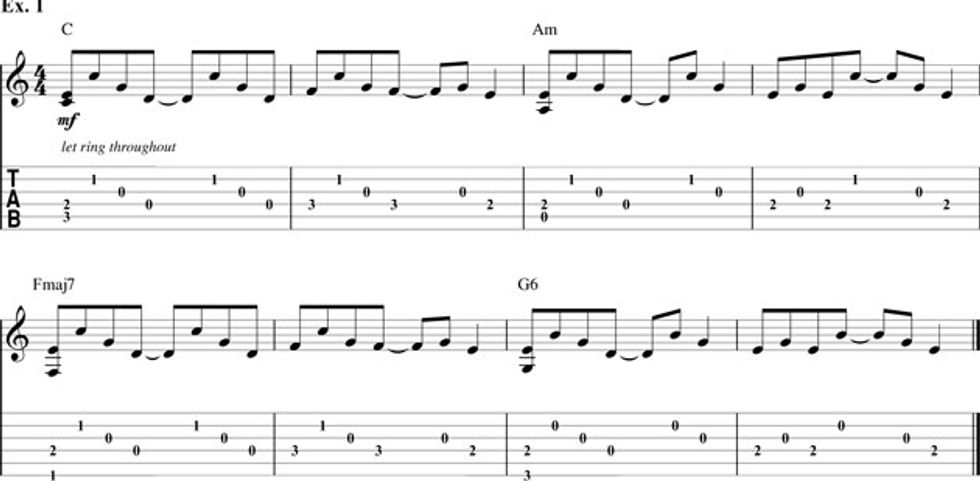
Like the CAGED lettering says, the next position is A. That means a capo at the 3rd fret, where a fingered A produces a C chord. Here the original melody gets doubled an octave higher—instant fairy dust!
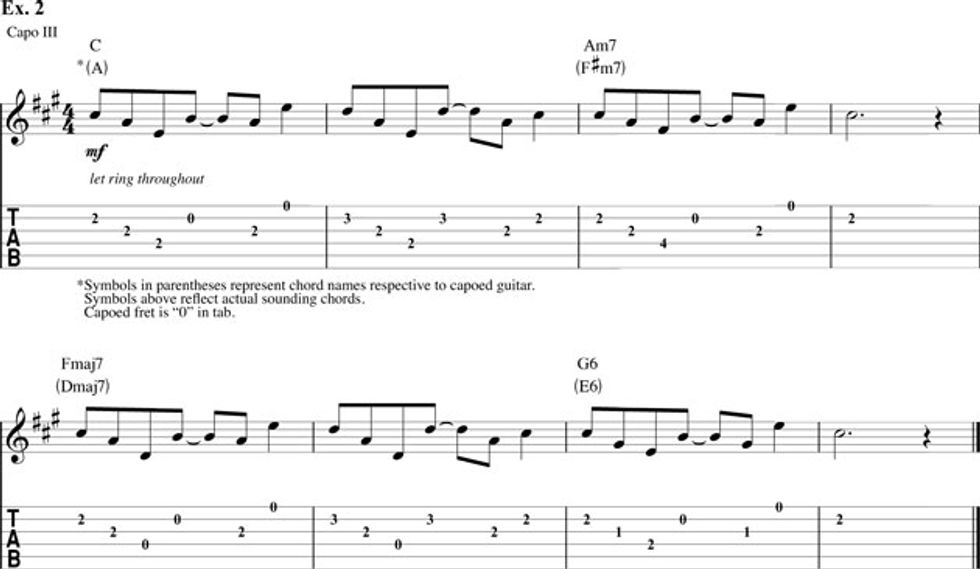
Like all the examples, this one isn’t an exact double. It reinforces the main melody, but mud-making low notes are omitted and the arpeggiation varies. The effect is two interlocking but discrete parts, as opposed to the illusion of a single expanded-range instrument that we’d get with precise doubling.
Up the neck. With the capo at the 5th fret, open G corresponds to the original C chord. The result sounds similar to the A-position double, and many notes are identical. Still, you can perceive meaningful differences: This position permits more chiming open strings, and you can feel the guitar’s character start to change. The higher we capo, the more we alter the guitar’s resonance, and the more the paired parts sound like different instruments.
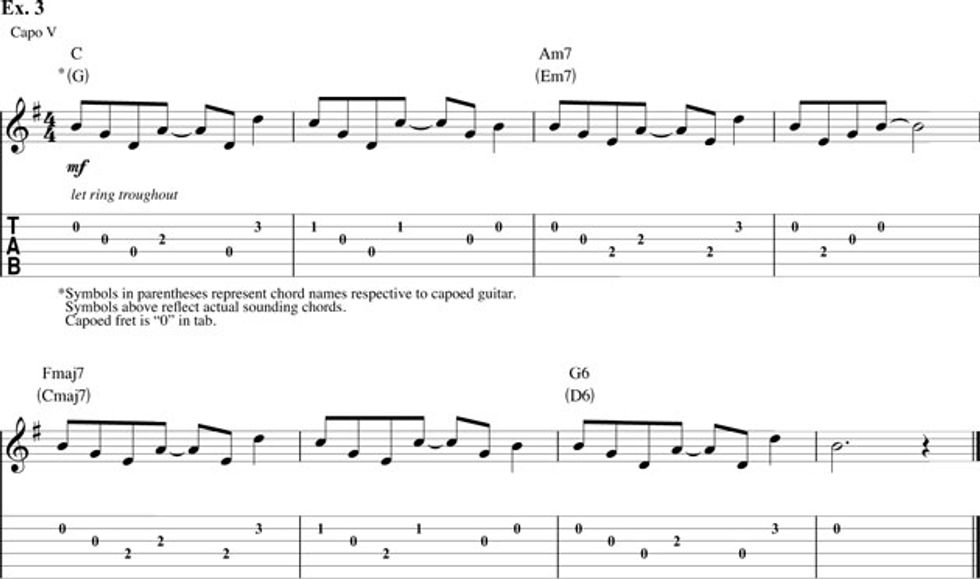
Advancing to the E position with an 8th-fret capo, the contrast grows stronger. Here you can use the open 1st string as a pedal point. Between the octave-up melody and the ringing high note, it’s a double dose of fairy dust. It’s starting to sound like some weird zither rather than the same guitar. (This transposition might be my favorite of the bunch.)
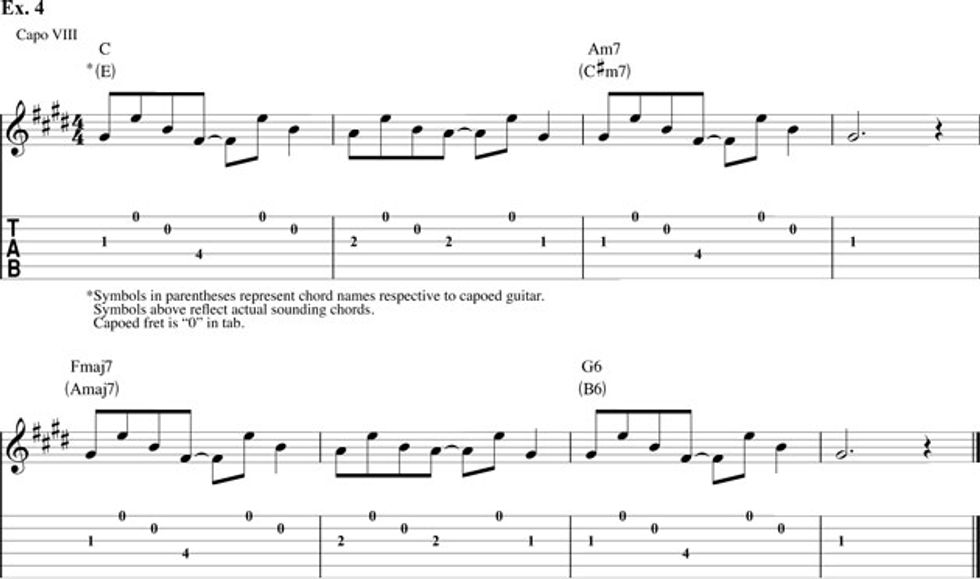
Finally we reach the last letter: D, with the capo at the 10th fret. Now the overdub really sounds like a different instrument. Is that differentiation desirable? Duh—it depends on the context!
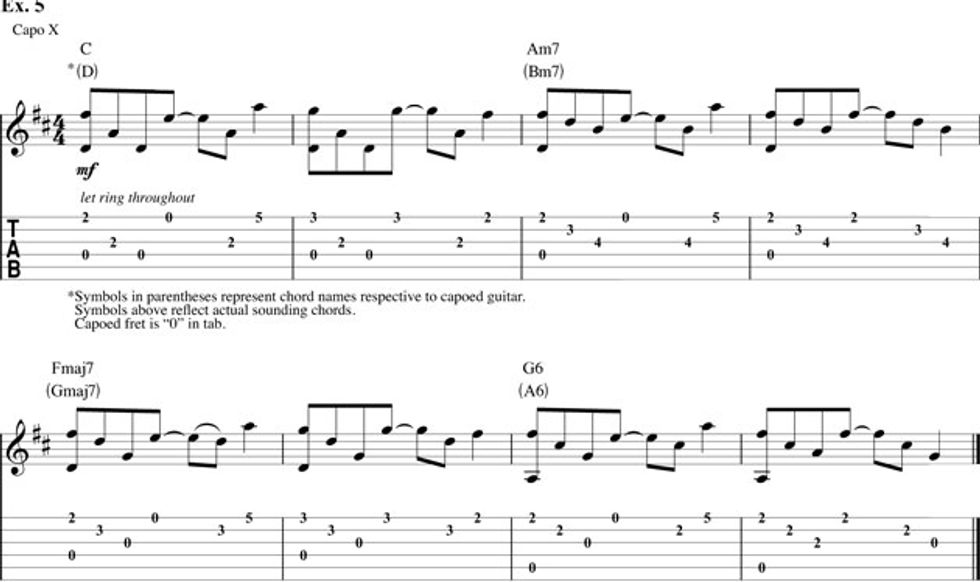
Your transposition mission. Some art instructors make students draw familiar objects upside-down. Their reasoning: When you consider the familiar from an unfamiliar perspective, you challenge your visual assumptions. You’re not thinking about how it’s “supposed” to look—you must focus objectively on its actual lines and proportions.
Transposition can work like that. Liberated from muscle-memory autopilot, you can focus on a part’s musical essence. You often find that it sounds and feels better in a different position, whether or not you use a capo.
Our examples here are near-doubles that mirror the primary part. But the same principles apply even when crafting an idea to contrast other parts rather than reinforce them. I’ve found transposition particularly helpful when accompanying singer-songwriters who rely heavily on open-position chords. Try it and see: Next time you’re tackling a song in C, consider approaching it via A, G, E, or D.
